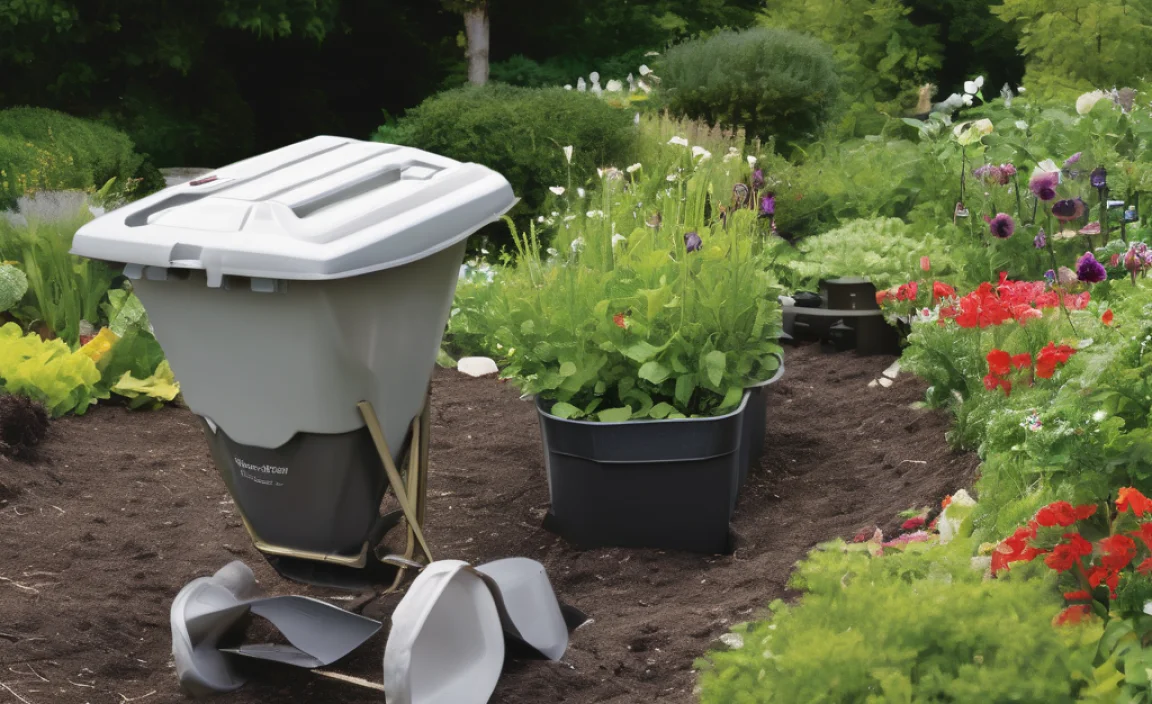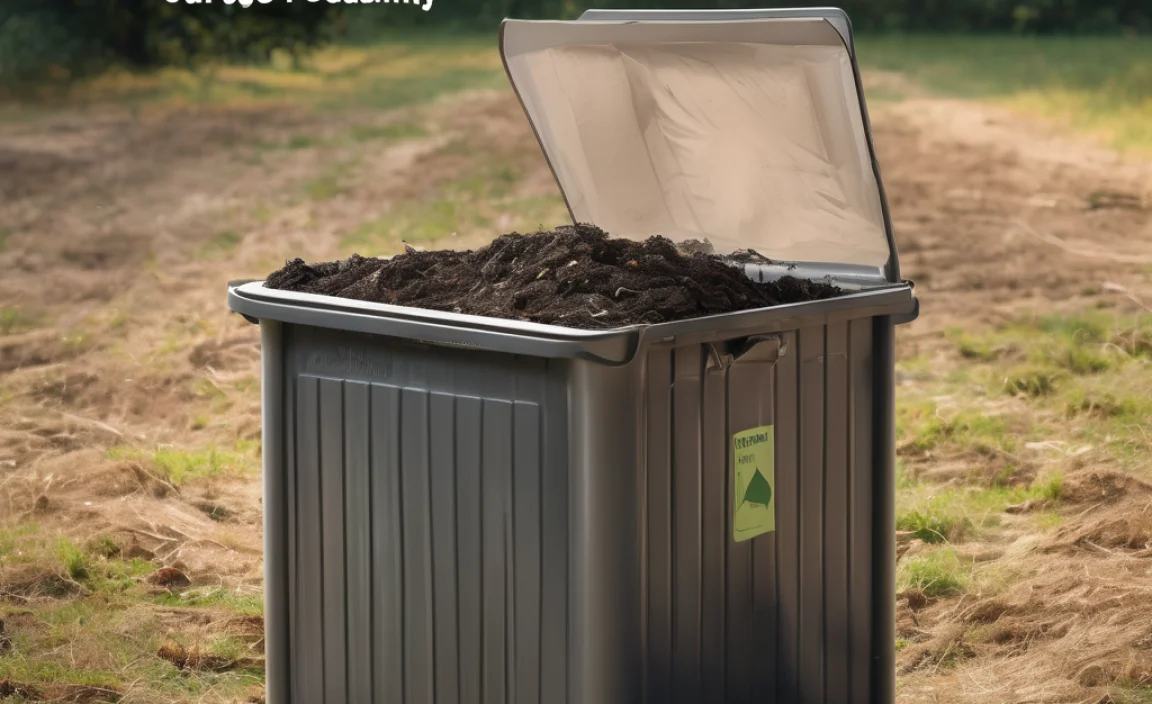Thinking about starting your own compost bin? It’s a fantastic way to reduce waste and nourish your garden. But figuring out just how big your compost bin needs to be can feel like a puzzle. Too small, and you’ll be overflowing in no time. Too big, and it might take up too much space or just feel overwhelming. Don’t worry, there’s a simple solution! We’re going to explore a “genius” tool that makes this decision easy peasy. Get ready to find the perfect compost bin size for your needs!
What’s So Genius About a Compost Bin Calculator?

Let’s get real for a second. When you’re just starting out with composting, the sheer volume of kitchen scraps and yard waste can be a bit daunting. You might wonder, “Can I really fill a whole compost tumbler?” or “Will this small bin handle all my grass clippings?” It’s a common question, and honestly, one that stops a lot of folks before they even begin.
A compost bin calculator is like your wise, experienced friend who’s been composting for years. It takes the guesswork out of the equation. Instead of squinting at your trash cans and trying to guess, this tool gives you a clear, data-driven answer tailored just for you. It helps ensure you get a bin that’s just right – not too big, not too small, but perfectly sized to handle your composting needs efficiently.
We’ve all been there, staring at overflowing bins or wondering if we’re doing it right. This calculator is designed to give you confidence right from the start. It’s simple, effective, and saves you from making a potentially costly mistake. Ready to unlock this secret weapon?
Why Size Matters: The Composting Equation
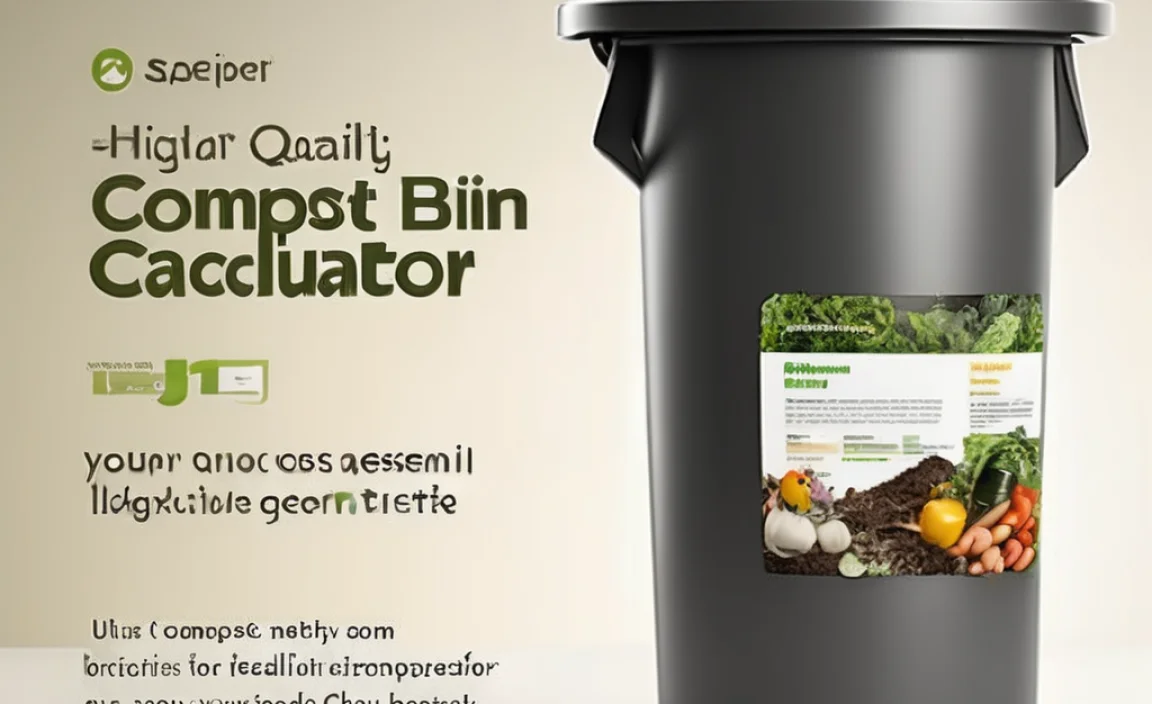
Composting is all about balance. You’ve got your “greens” (nitrogen-rich stuff like food scraps and grass clippings) and your “browns” (carbon-rich stuff like dry leaves and shredded cardboard). To get that magical compost happening, you need the right ratio and enough space for the process to work its magic. If your bin is too small, you might not have enough room for the materials, leading to slow decomposition or even unpleasant odors. If it’s excessively large, you could end up with a cold, inefficient pile, or just waste valuable space.
Think of it like baking a cake. If you have a recipe that calls for a 9-inch pan, and you try to bake it in a 6-inch pan, it’s going to overflow. Conversely, if you use a 12-inch pan, your cake will be thin and might not bake evenly. Your compost bin size needs to match the volume of “ingredients” you’re likely to produce.
Factors Affecting Your Compost Bin Size Needs
Several things will influence how much composting capacity you’ll need. Understanding these will help you use a calculator more effectively and make a better choice for your home.
- Household Size: More people generally mean more food scraps. A single person will produce less waste than a family of five.
- Dietary Habits: Are you folks big on using up vegetable peels, coffee grounds, and fruit cores? Or do you tend to eat a lot of packaged goods?
- Gardening Activity: Do you have a sprawling garden with lots of lawn clippings, fallen leaves, and plant trimmings? Or are you primarily dealing with kitchen waste?
- Outdoor Space: How much room do you realistically have for a compost bin? Some bins are quite hefty!
- Composting Method: Tumblers, static bins, and open piles can all have different space requirements and fill rates.
So, how do we quantify this? This is where our trusty compost bin calculator comes in!
How Does a Compost Bin Calculator Work? Its Magic Revealed!
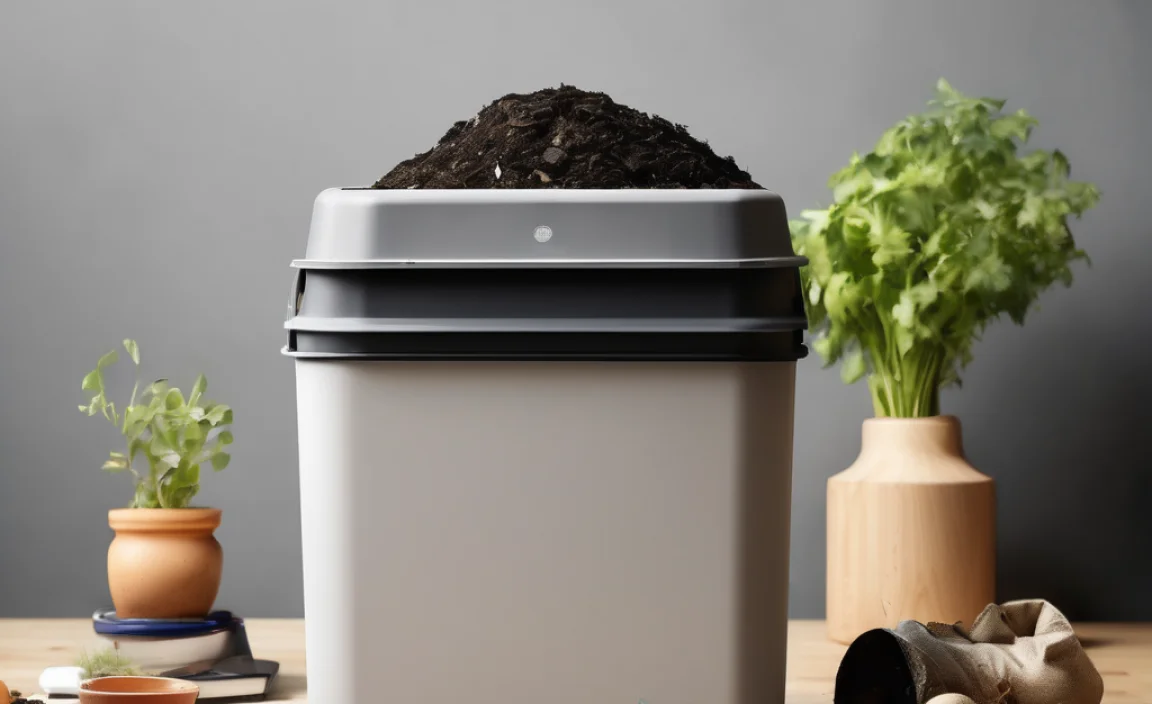
At its core, a compost bin calculator is designed to estimate the amount of organic “waste” your household generates over a period, and then suggest a bin size that can comfortably accommodate it. They usually ask a few simple questions to get a personalized recommendation.
The Questions You’ll Typically Encounter
Don’t be intimidated; these are straightforward questions that help the calculator do its job. You won’t need a degree in advanced mathematics!
- Number of people in your household: This is a primary driver for kitchen waste volume.
- Frequency of yard waste generation: Do you have frequent tree trimmings or lawn mowing that adds to your compost pile?
- Amount of kitchen waste per person per week (estimated): Sometimes this is given as a general estimate or you might be prompted to think about how many bags of kitchen scraps you’d typically fill.
- Desired composting speed/batch size: Some calculators might ask if you want to process waste quickly (suggesting a larger, more actively managed bin) or if you’re happy with a slower, more passive approach.
Once you input this information, the calculator uses pre-programmed formulas to estimate your total organic waste and then translates that into recommended compost bin dimensions or volume (often in cubic feet or liters).
Understanding the Output: What Do the Numbers Mean?
The calculator might give you a range of sizes, or a specific recommendation. For example, it might say you need a bin between 50 and 100 gallons (or roughly 7-13 cubic feet).
Key things to remember about the output:
- Volume (Cubic Feet/Gallons): This is the most common measurement. It tells you the total space the bin occupies.
- Dimensions (L x W x H): Some calculators might give you specific dimensions. This is helpful for checking if a bin will fit in your yard.
- Batch Composting: If you’re using something like a two-bin system or a tumbler, the calculator might be helping you estimate the volume of one batch or the total capacity needed to keep one bin actively composting while another “cures.”
The goal is to find a bin that allows for sufficient aeration and turning, promoting faster decomposition. A bin that’s too small will get compacted, leading to anaerobic conditions (lack of oxygen) and potential smells. A bin that’s too large might take a very long time to heat up and process the materials if not managed carefully.
Popular Compost Bin Calculator Options & How to Use Them
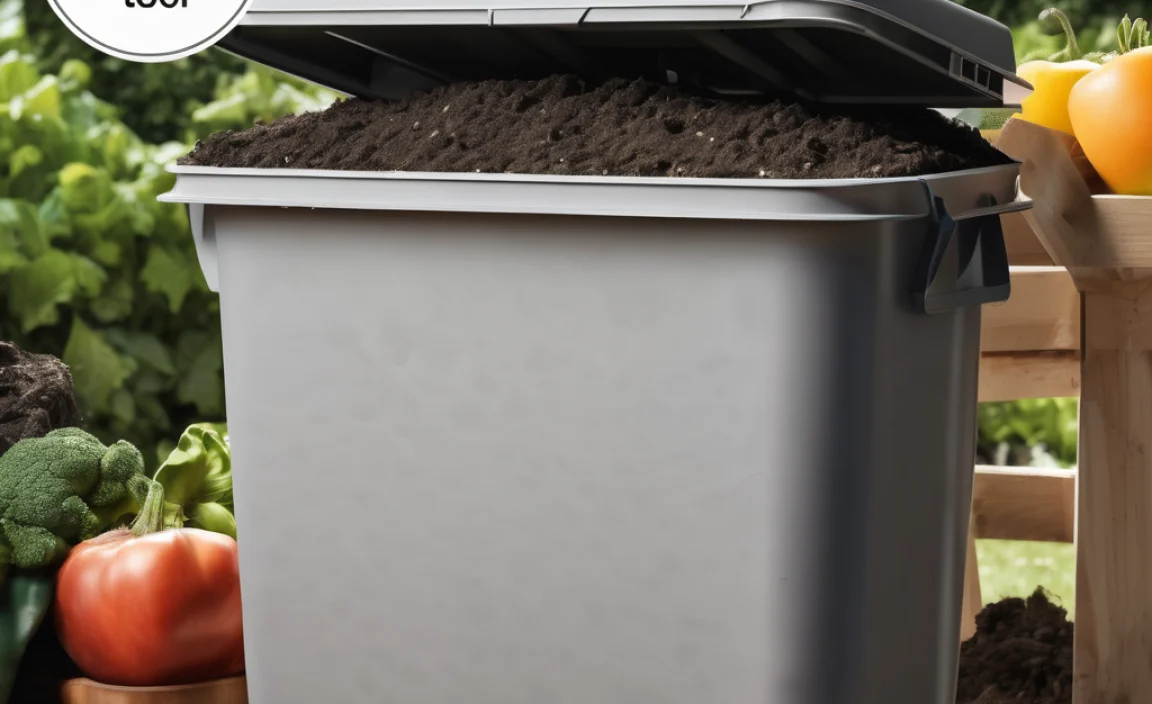
While there isn’t always one single, official “calculator” that everyone uses, there are many online tools that function as such. They’re often integrated into gardening supply websites, environmental resource organizations, or DIY blogs. Let’s look at the types you might find and how to get the most out of them.
Online Tools & Widgets
Many websites offer simple-to-use compost bin calculators. You’ll typically find these by searching for terms like “compost bin size calculator” or “how to choose a compost bin.”
Example of a typical calculation process:
- Locate a calculator: Search online for “compost bin calculator.” Reputable sources often include university extension sites (like K-State Research and Extension) or established gardening product retailers.
- Input your household data: Enter the number of people, your gardening habits, etc.
- Receive recommendations: The tool will suggest a bin size, usually in cubic feet or gallons. Some may also provide suggested dimensions.
- Compare to available bins: Use the recommended size to research compost bins for sale or plans for DIY bins.
DIY “Rule of Thumb” vs. Calculator
Before calculators became readily available, composters relied on general rules of thumb. While useful, they aren’t as precise. A common guideline is that a compost pile needs to be at least 3 feet x 3 feet x 3 feet (1 cubic yard or about 27 cubic feet) to effectively heat up and break down materials efficiently. Shorter or smaller piles may decompose, but at a much slower rate and without the same pathogen-killing heat.
A calculator refines this. If you have a small household and minimal yard waste, a full cubic yard might be overkill. Conversely, a large family with a big garden might struggle with anything less.
What If I Compost in Batches (Tumblers)?
Many beginners opt for compost tumblers. These are enclosed bins on a rotating axis that make turning easier. Calculators can still help here, but you might be looking at the total capacity of the tumbler rather than the size of a static pile.
For a tumbler, the calculator helps you determine if a 30-gallon tumbler will be enough for your weekly kitchen scraps and garden trimmings, or if you need a larger 70-gallon model to keep up.
Choosing the Right Bin Type Based on Size Needs
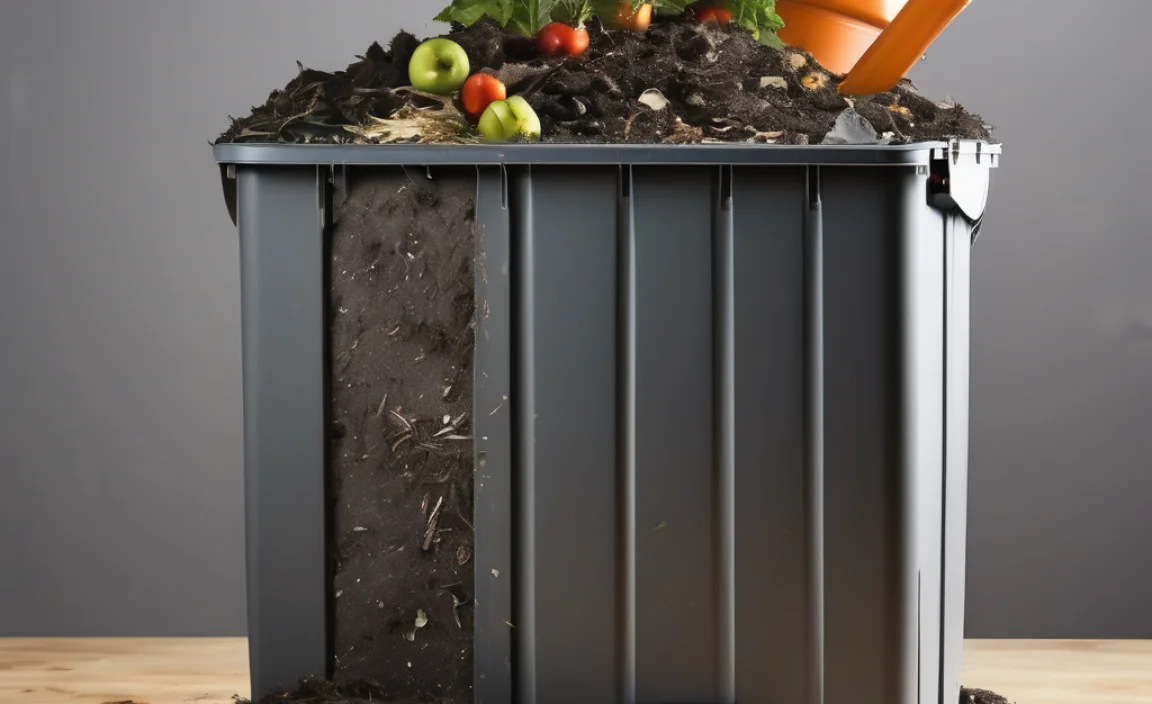
Once you have a size recommendation from a calculator, you can then think about what kind of bin will best suit your needs and space. The size you need will influence the type of compost bin you choose.
Static Bins (Open Piles or Enclosed Bins)
These are often the most common types for home gardens. They can be simple, three-sided structures, enclosed single or dual bins, or even just an open pile managed in a corner of the yard.
- Pros: Generally inexpensive (especially DIY), can be very large, good for processing large volumes of yard waste.
- Cons: Can be slower to break down materials if not turned regularly, can look untidy if not managed well, might attract pests if not properly maintained.
- Size Fit: Great for general recommendations if you have space. A calculator helps ensure you’re not building (or buying) something too big if your needs are modest.
Compost Tumblers
These are enclosed drums or bins that rotate, making it easy to mix and aerate the compost. They come in various sizes, typically from 20 gallons up to 70 gallons or more.
- Pros: Aerates easily, often pest-resistant, can produce compost relatively quickly, neat and tidy appearance.
- Cons: More expensive than basic bins, can be harder to add large volumes of material, sometimes have a limited capacity that might not suit very high waste generators.
- Size Fit: This is where a calculator recommendation is crucial. If the calculator suggests you need the capacity of two 50-gallon tumblers, but you can only fit or afford one 70-gallon tumbler, you might need to adjust your composting habits or consider a different bin type.
Three-Bin Systems
For serious gardeners or those with significant yard waste, a three-bin system is ideal. It usually involves three adjacent bins: one for adding fresh material, one for actively decomposing material, and one for finished compost.
- Pros: Excellent for managing different stages of compost, allows for continuous composting, can handle very large volumes.
- Cons: Requires more space, more effort to build or buy, best suited for those with substantial yard waste.
- Size Fit: A calculator helps estimate the total volume needed. Even for a three-bin system, knowing your weekly input helps you size each of the three sections appropriately.
Table: Typical Compost Pile Sizes and Their Suitability
Here’s a general guide to how common compost bin sizes can serve different needs. Remember, a calculator will give you a more personalized estimate!
| Approximate Volume (Cubic Feet) | Approximate Volume (Gallons) | Best For | Considerations |
|---|---|---|---|
| 3-6 | 20-45 | Apartment dwellers, small families with minimal yard waste, primary use of kitchen scraps. | May require frequent turning to maximize efficiency. Tumblers in this range are common. |
| 7-13 | 50-100 | Average households (2-4 people), moderate yard waste, a good all-around choice for many suburban homes. | Allows for good aeration and decomposition. Many standard stationary bins and larger tumblers fall here. |
| 14-27+ | 100-200+ | Large families (4+ people), significant yard waste (large garden, lots of trees), serious gardeners. | Requires more space. Static bins or multi-bin systems are ideal. May need more active management to maintain optimal heat. |
Knowing your target volume from the calculator is the first step to selecting the right physical bin.
Maximizing Your Compost Bin Efficiency (Beyond Just Size)
While size is crucial, it’s not the only factor for successful composting. Once you have your perfectly sized bin, here are a few tips to make sure your compost turns into black gold as efficiently as possible:
A Proper Mix is Key
Remember those “greens” and “browns”? A good ratio is vital. Aim for roughly 2-3 parts browns to 1 part greens by volume. Too many greens, and it can get slimy and smelly. Too many browns, and decomposition will be very slow.
- Greens (Nitrogen-rich): Fruit and vegetable scraps, coffee grounds, tea bags (no staples), grass clippings, fresh plant trimmings.
- Browns (Carbon-rich): Dry leaves, straw, shredded newspaper or cardboard (uncoated), small twigs, sawdust (from untreated wood).
Moisture Content
Your compost pile should be damp, like a wrung-out sponge, but not waterlogged. Too dry, and the microbes can’t work. Too wet, and you might get anaerobic conditions and foul odors.
Aeration (Oxygen)
Composting microbes need oxygen to thrive. Regular turning of the pile (or tumbling the bin) introduces air. This is why the size recommendations are about more than just volume; a bin that’s too packed can’t breathe!
Particle Size
Smaller pieces break down faster. Chop up large vegetable scraps and shred cardboard and leaves. This increases the surface area for microbes to work on.
By paying attention to these factors, even a correctly sized bin will perform much better.
Common Pitfalls to Avoid with Compost Bin Sizing
Even with a calculator, it’s easy to run into trouble if you’re not mindful. Here are a few common mistakes people make:
- Ignoring Yard Waste: Many calculators focus heavily on kitchen scraps. If you have a large yard, don’t underestimate the volume of leaves, grass, and trimmings you’ll add, especially seasonally.
- Underestimating Future Needs: Thinking about starting a bigger garden next year? Or maybe your family is growing? Consider sizing up slightly if you anticipate increased waste.
- Not Measuring Your Space: A calculator might suggest a 10-cubic-foot bin, but if you only have a 3×3 foot footprint available, you’ll need to find a bin that fits vertically or re-evaluate your bin type preference.
- Buying the “Cutest” Bin Instead of the Right Size: We all love aesthetically pleasing garden additions, but functionality comes first. Make sure the size is right before falling in love with a bin’s appearance.
- Confusing Bin Capacity with Pile Volume: A 70-gallon tumbler is great, but it might only be able to hold a certain amount of finished compost or a specific batch size. The calculator helps you understand if this capacity matches your input volume.
Using that calculator as a starting point, but also applying common sense about your available space and future plans, is the winning strategy.
Where to Find a Compost Bin Calculator and What to Look For
So, where do you actually find these magical tools? They’re more accessible than you might think!
Online Resources
The easiest place to find these calculators is online. Look for websites that are:
- University Extension Offices: Many U.S. universities have agricultural or environmental extension programs that provide guides on composting. Search for your state’s extension office + “compost calculator” or “home composting.” These are often very reliable and science-based. For example, UNH Extension offers excellent composting guides.
- Environmental Organizations: Groups focused on sustainability, waste reduction, or gardening often have similar tools.
- Gardening Blogs and Retailers: Many popular gardening websites and even companies that sell compost bins will offer a calculator to help you choose one of their products. Just be mindful that retailer calculators might steer you towards their product lines.
What Makes a “Good” Calculator?
When you find a calculator, consider these things:
- Clarity of Questions: Are the questions easy to understand? Do they ask about factors relevant

I am passionate about home engineering. I specialize in designing, installing, and maintaining heating, ventilation, and air conditioning systems. My goal is to help people stay comfortable in their homes all year long.

